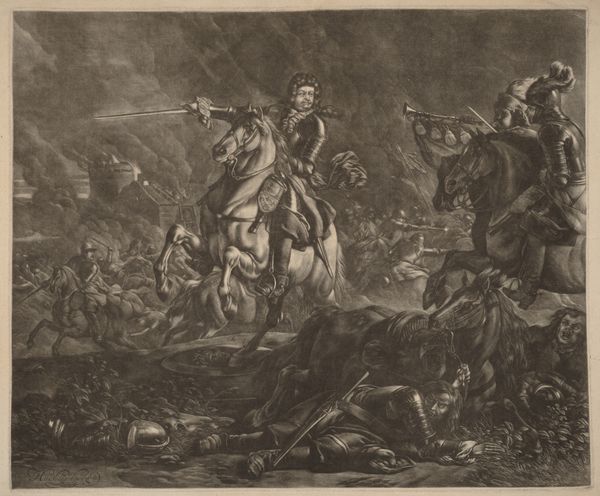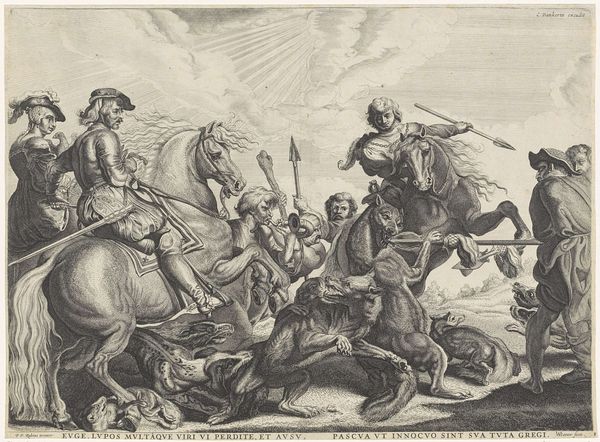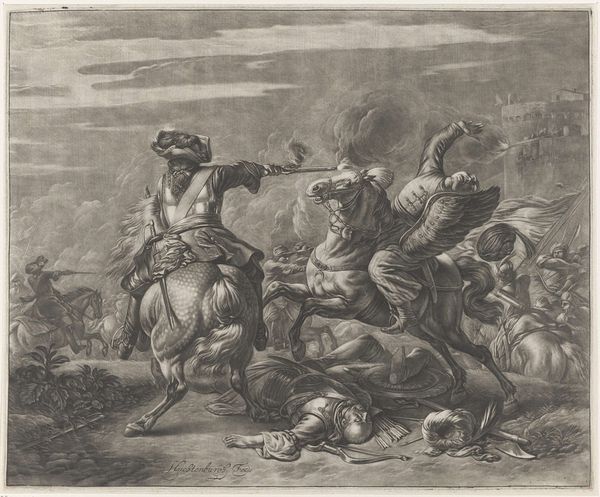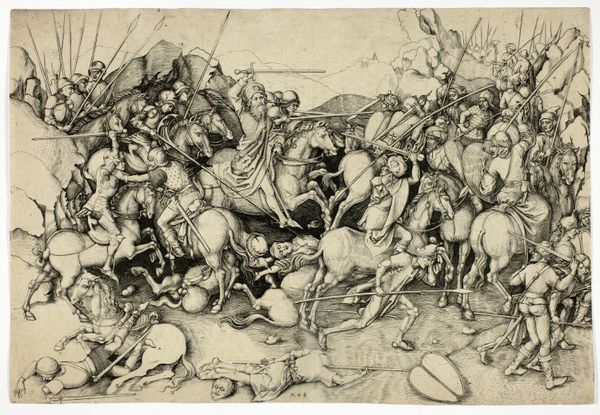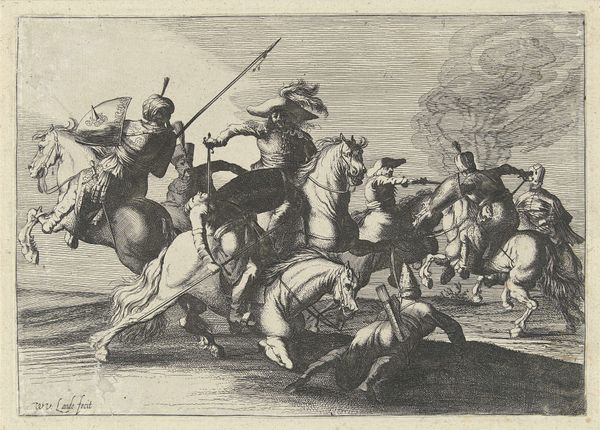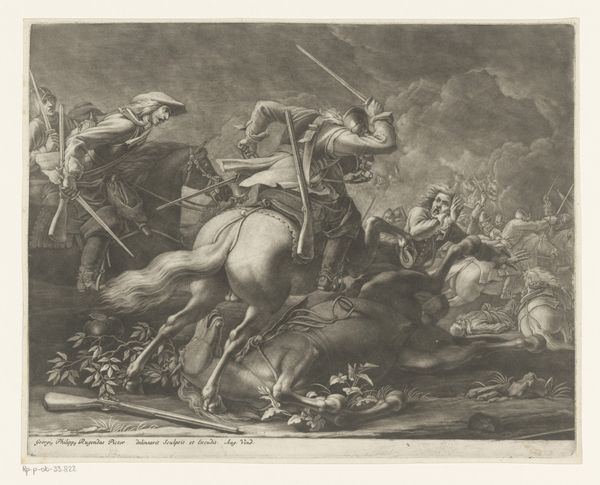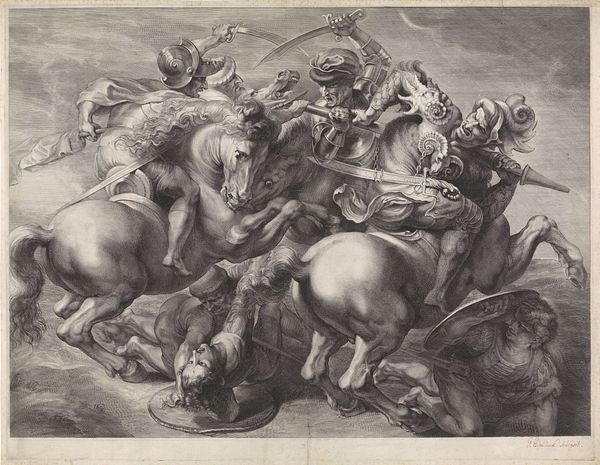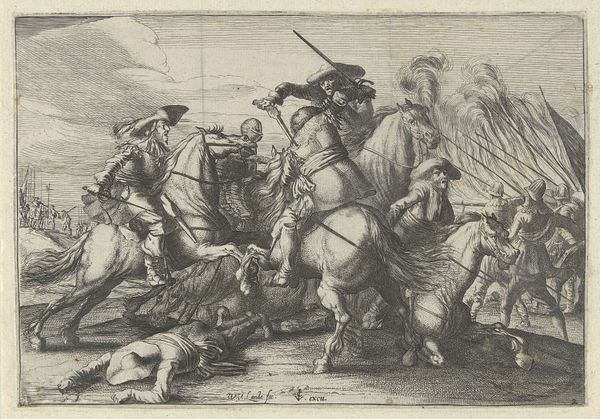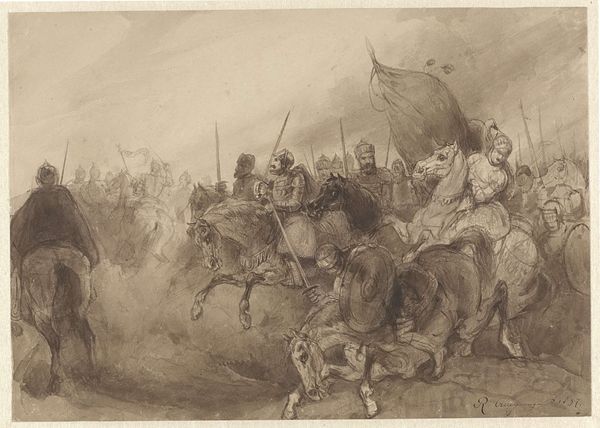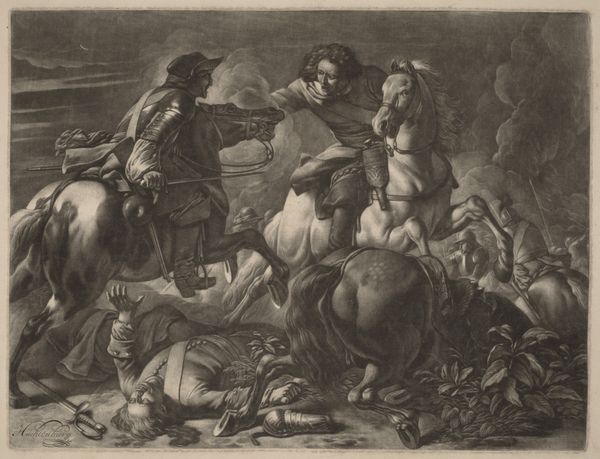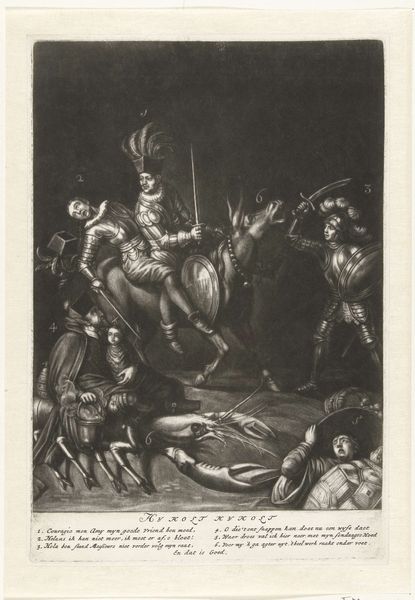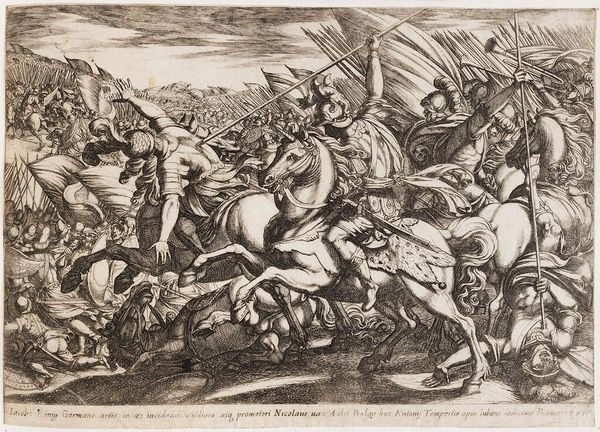
print, engraving
#
narrative-art
#
baroque
# print
#
landscape
#
charcoal drawing
#
figuration
#
chiaroscuro
#
surrealism
#
line
#
history-painting
#
engraving
Dimensions: height 223 mm, width 292 mm
Copyright: Rijks Museum: Open Domain
Curator: Here we have "Janitsaren in gevecht" created between 1670 and 1724, made by Jacob Gole. The artwork on display here at the Rijksmuseum is an engraving. What are your first thoughts? Editor: It's strikingly baroque! All that intense drama compressed into a black and white print. The dynamism of the horses, the chaos of battle... it’s quite the spectacle, particularly that contrast, that dark chiaroscuro. Curator: Indeed. Gole was a master engraver. It’s fascinating how printmaking allowed for wider dissemination of images of conflict. Consider the implications of these images of Janissaries – soldiers in the Ottoman army – circulating in Europe. This brings into focus the cultural perceptions being shaped by easily accessible media. Editor: I'm struck by the composition. The way Gole directs your eye with diagonals, leading you from the fallen horse in the foreground right to the conflict, culminating in a smoking, tumultuous sky. Semiotically speaking, these stark visual components symbolize conflict. Curator: Right. Gole wasn’t present for any actual battle. He constructed this image – this narrative. Reflect on the labor involved in creating these images. The skilled artisan producing multiple copies, sold at market. Consider the work, the tools involved in the repetitive and detailed process. Editor: I’m interested in how he renders texture through line. Look at the sheen on the armor, the roughness of the earth. He is playing with formal aspects such as value. Curator: Yes. This image serves as a tangible object—it exists within a network of exchange, reflecting social and economic structures of the time. Who had access? What other materials were traded for images like these? Editor: Thinking about it, that line work makes me question the overall success. It is almost hyperrealistic given the dramatic landscape and figuration, so how should we judge the overall artwork and the components? Curator: It invites consideration of how information – and propaganda – was constructed and distributed in early modern Europe. Thank you for lending your perspective. Editor: A vital consideration as well is the contrast Gole invokes for his commentary. I walk away having learned more about the themes within it.
Comments
No comments
Be the first to comment and join the conversation on the ultimate creative platform.
